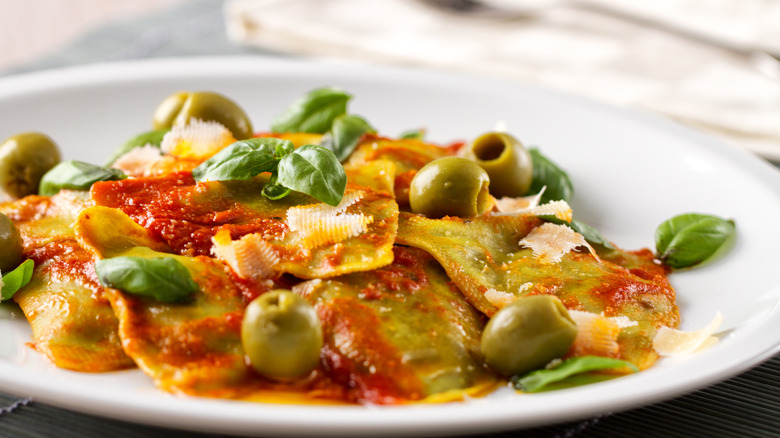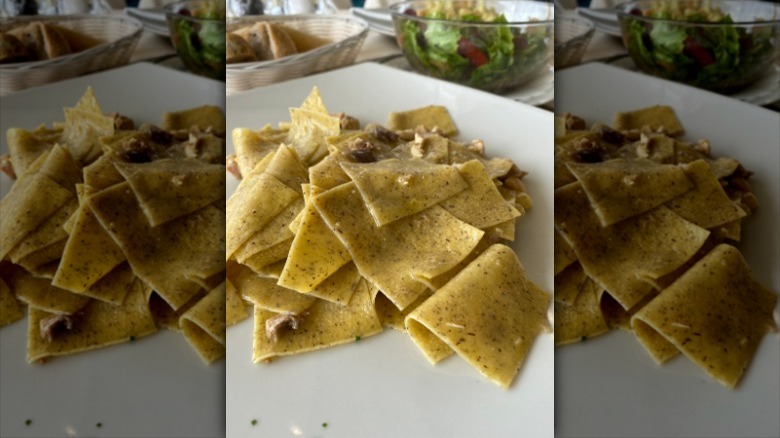Blecs: The Hand-Rolled Pasta That's As Delicate As Dumplings
Buckwheat flour isn't necessarily a mainstream ingredient in American cuisine, but it has a following, to be sure. That's especially true when making something as specific as hand-rolled Italian pasta called blecs. With a commonly agreed birthplace in the northeastern region of Italy, particularly in Friuli, these lovely little triangles of pasta are as delicate as dumplings and stretchy enough for easy rolling and cutting. That's because of the inherent characteristics of buckwheat flour.
Though buckwheat flour is naturally gluten-free, most modern blecs recipes call for a mixture of buckwheat and standard wheat flours, making this pasta unsuitable for strict gluten-free diets — unless using a recipe that sticks to only buckwheat or one that calls for a mix with gluten-free cornmeal flour. The buckwheat flour, whether used alone or combined with other types of flour, imparts a distinct flavor to blecs, unlike that of egg-style pasta. You'll notice a natural, earthy taste with nutty undertones, a result of buckwheat being a seed rather than a grain.
Another unique quality of blecs, also known as biechi, is that this type of pasta traditionally comes with a sauce or topping that's quite different from tomato-based ones such as marinara, Pomodoro, or bolognese. It also veers away from pesto-based sauces or white, creamy Alfredo ones.
Serve blecs with a unique, traditional Italian cheese
After hand-rolling, cutting into triangles, and boiling blecs pasta to a pillowy soft texture, you may as well go all the way and top it with a traditional sauce specific to northeast Italy. It's basically a topping made with butter and cheese, but there's some sage and cornmeal involved as well. Sage leaves get lightly sauteed in the melted butter, then removed and replaced with cornmeal.
After stirring to a light golden color, the blecs get heartily tossed in the buttery cornmeal and topped with grated cheese. Some chefs prefer a smoky cheese while others specify Montasio, a native Italian cheese originating from 13th-century Benedictine monks in the Montasio mountain range of Friuli, which is also home base for the blecs pasta. As a specialty cheese made with fresh cow's milk, it could be hard to find. So feel free to substitute with grated Parmigiano-Reggiano cheese.
It's also easy to use handmade blecs pasta in standard pasta dishes such as chicken tossed with olive oil, rosemary, basil, or similar spices. Just be careful not to overcook the blecs, since it's the soft, dumpling-like texture that makes it so special and distinct from other types of pasta.

